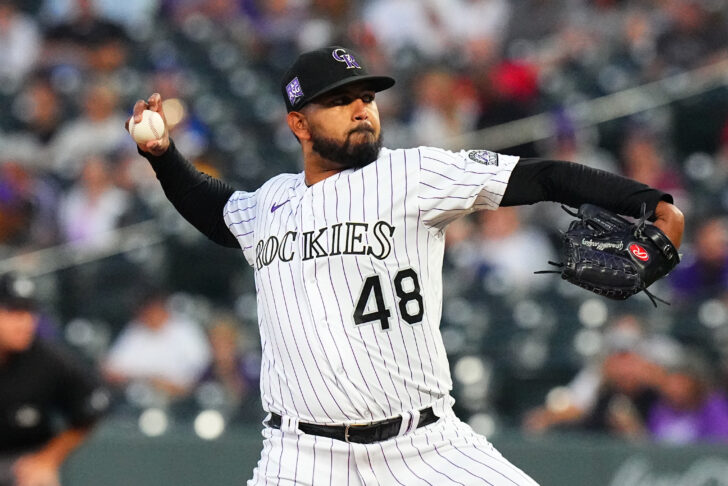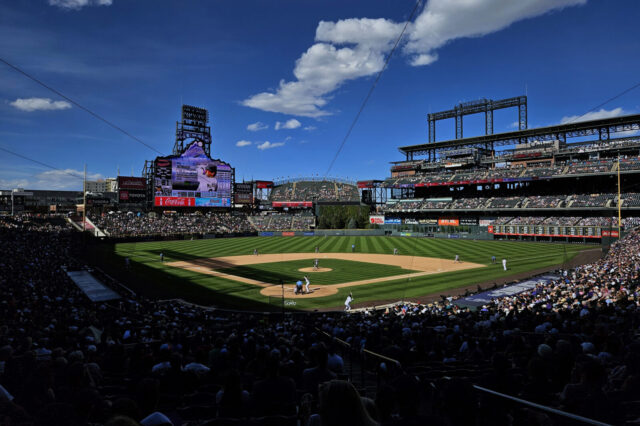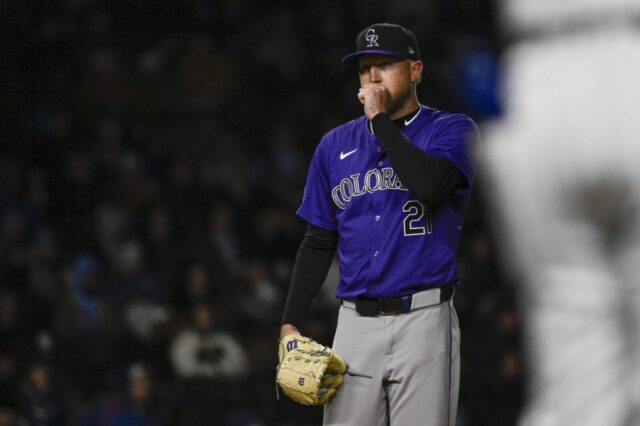Why did the Colorado Rockies not finish in last place in 2021?
They were widely predicted to lose 100 games or more, finish dead last in the National League West, and generally be an embarrassment.
Some said they’d be historically bad and Vegas put their pre-season win total at 62.5.
So, how did they end up easily surpassing all those expectations on their way to a still-not-good 74-87 Record?
The short answer is, “starting pitching.”
A longer answer involves breaking down total dominance of Coors Field, some under-the-radar breakout performances, and a team that ultimately just had more talent than most people realized.
Of course, this wasn’t enough to push them into relevancy but it is where we begin as we look at the current state of the ballclub.
Trevor Story and Jon Gray, you may have heard, are out. Other than that, the team remains largely intact.
So, who are these guys and what can they do? Let’s take a look. Let’s break it down. Let’s hand out some grades.
Starting Pitching – B+
Let’s also begin with the good news, yeah?
Despite the loss of Gray, the Rox rotation remains formidable.
All-Star German Marquez stands ever-poised to become a Cy Young contender. He boasts monster strikeout numbers thanks to a nasty combination of high-end velocity and wicked breaking pitches. He has twice come a single shy from pitching a no-hitter, once in San Francisco and once in Denver.
His raw career ERA of 4.28 belies his true production, better reflected in a park-adjusted ERA+ of 115. But Marquez himself has been open and honest about the fact that his moments of brilliant dominance are interspersed with far too many uninspired performances.
If Marquez remains who he has been, he stands as a solid foundation to build the rest of the rotation around but if, at age 27 he puts it all together, he has all the potential to become one of the best pitchers in MLB.
Kyle Freeland has a little bit of experience with such rarified air, placing fourth in Cy Young voting in 2018. He should have come in second. His follow-up season was a disaster in just about every way but Freeland appears to have recovered from what ailed him in 2019.
During a shortened 2020 campaign, he excelled to a 120 ERA+ and backed that up with 110 in 2021, giving him a remarkably quality 117 career mark. A lack of overwhelming strikeout stuff will always limit how some fans and media view his chances of being a true “ace” but we have enough data on Freeland at this point to be able to expect consistently well above average pitching.
His comfort pitching at home and a competitive spirit he showcased in out-dueling Jon Lester in the Wild Card make Freeland appointment television for all his fellow Denver natives.
Antonio Senzatela is the most underrated member of the current rotation. He has had anything and everything thrown his way early in his career, responding well to a litany of call ups and send-downs and trips back and forth to the bullpen.
Coming out of all of it, Senza emerged in 2020 with a new body and a new set of breaking pitches. He went on to dominate the pandemic season, ranking near the top of the NL with a 151 ERA+.
He wasn’t able to keep up that blistering pace last year, falling back to a more reasonable 108 ERA+ but the swing-and-miss rates continue to be a pleasant improvement. Senzatela has also developed a dominance of Coors Field, where he carries a lifetime record of 24-12, a winning percentage bested only by Jorge de la Rosa.
Austin Gomber comes next and while he has unfortunately and uinfairly been made the posterchild for fans upset about the Nolan Arenado trade, he quietly displayed all the signs of a pitcher who can succeed in this most-difficult environment.
His commitment to not walking batters aligns with decades of data showing that the worst thing a Rockies pitcher can do is give away free bases.
He made an inauspicious Colorado debut in this regard, walking seven Dodgers in just three innings of work, but after that he became one of the most efficient pitchers in the National League.
Over his next 18 games, as a rookie pitching half his games at the most offensive ballpark in MLB, he posted a 3.82 ERA and struck out 96 while walking just 21.
A mid-season injury and late-season fatigue meant a rougher end to the year but he still finished with a more-than-respectable 4/53 ERA and 105 ERA+.
At 28 years old, Gomber is the “old man” of the group, right in the middle of his physical prime and with plenty of room for improvement as he moves into his second full year of starting games at the highest level in the land.
After those four, the Rockies currently have a pair of intriguing prospects to battle for the fifth spot.
Peter Lamber already made his debut and has a bit of experience under his belt but has also missed the last two seasons recovering from Tommy John surgery.
Ryan Rolison is poised to make his first start after impressing at every level of the minor leagues, Arizona Fall League, and even major league Spring Training.
There are, as always, a myriad of veterans and journeymen around after that should the Rockies need to reach deeper into their roster. And they could stand to add a few more to that category.
But as it stands right now, the Rockies have a pretty good rotation with a sound floor and a great deal of potential for every single individual to get better.
It can be difficult to see, especially based on traditional numbers at times, but the Rockies rotation is easily the best part of the team and truly one of the best the organization has ever assembled.
The big question for this new era is going to be whether or not they are ever able to construct a roster around that rotation that can make them relevant.



